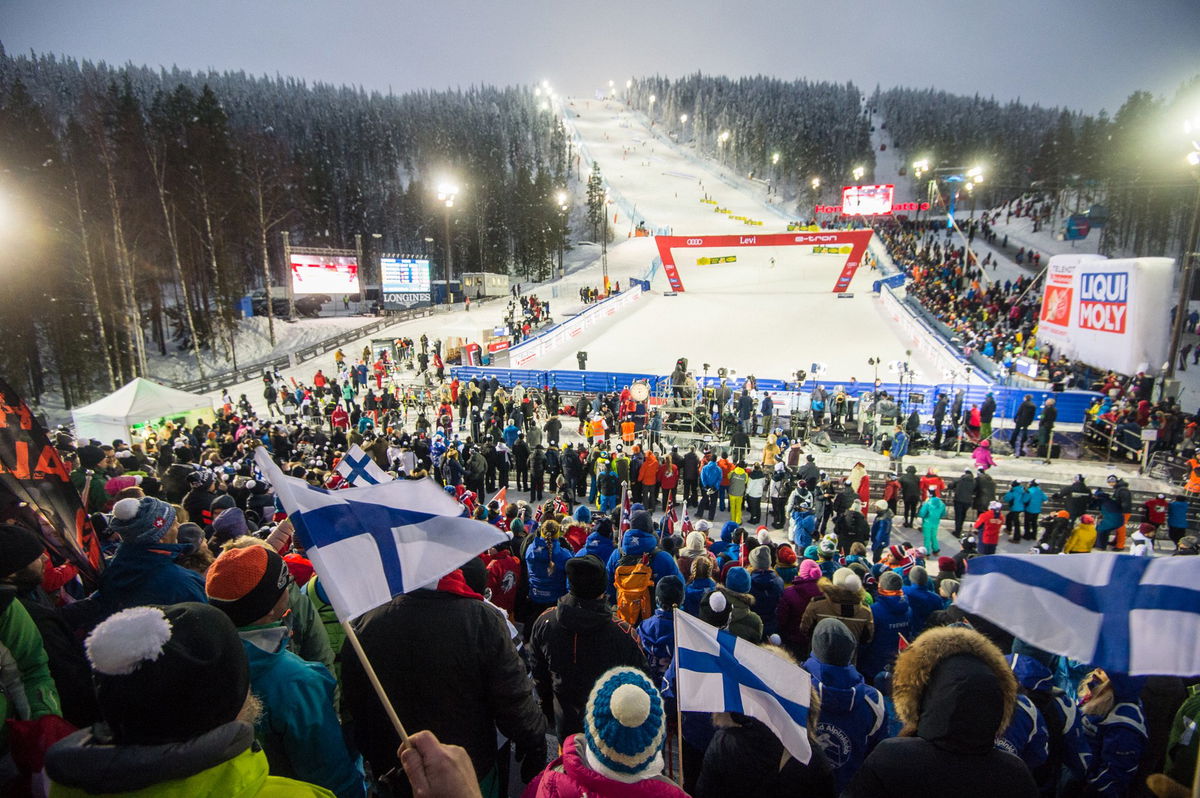

The climate crisis is increasingly reaching alarming levels, disrupting human activities that depend on natural weather cycles. Amidst this, the 2024 FIS Ski World Cup, which recently kicked off in Solden, is also feeling the effects. The next leg, the Gurgl Ski World Cup, scheduled for November 23 and 24, may face uncertainties, as the ongoing climate concerns threaten to undermine the event’s plans.
Watch What’s Trending Now!
Amid changing climate conditions, very high temperatures and negligible snow were recorded in the Alps, due to which, the Gurgl track in Austria had only a strip of snow at the base, engulfed by a green boundary. While the FIS inspection is soon on the charts, a change in the weather was hoped for after 5-6 colder nights, so that the track could be formed. But here are the steps that the Gurgl Ski World Cup has been taking to host the event.
ADVERTISEMENT
Gurgl Ski World Cup’s Green initiative
The Gurgl, notably called the Diamond of the Alps premiered on the World Cup circuit only last year. But despite being the debut slalom in Gurgl, it was been labeled the first Ski World Cup race in Austria that was conducted under the Green Events label. Needless to say, it was highly eco-friendly and emphasized sustainability, just like the location is doing in the second edition too.

ADVERTISEMENT
For the Gurgl Ski World Cup, organizers have implemented several environmentally friendly measures to reduce the event’s carbon footprint. These include strong emphasis on public transport, with a public bus running through Otztal every 30 minutes and encouraging carpooling. In addition to mobility, the organizers are prioritizing sustainability in resource usage. They have ensured that 100% renewable and green electricity powers the ORF broadcast vans and other event operations, eliminating the need for diesel generators. Moreover, paper usage has been minimized, with digital alternatives replacing traditional printed materials.
ADVERTISEMENT
The Gurgl Ski World Cup places a strong emphasis on waste reduction, utilizing reusable cups and containers while ensuring proper waste segregation. Additionally, the event prioritizes the use of regional food, with local produce sourced from nearby areas to support sustainability. These measures highlight the event’s commitment to setting a conscious example for hosting winter sports globally. The urgency of these actions is underscored by the fact that the track is situated over 2,500 meters above sea level, yet the freezing point now occurs around 2,600 meters, making it all the more crucial to address the challenges posed by climate change.
Top Stories
“RIP”: Prayers Pour In as Tom Brady’s Raiders Struck by Tragedy

Footage Surfaces of Florida Police Arresting NASCAR Veteran Over Disturbing Public Misbehavior

“Rest in Peace”: Prayers Pour In From Dan Marino as Dolphins Legend Mourns Tragedy in South Florida Football

Caitlin Clark Shows Concerning Signs vs. Kelsey Plum During USA Camp Debut, per National Reporter

“NFL Was Crying”: Maxx Crosby Says League Forced Him to Remove Shoes Honoring His Daughter

Chiefs QB Patrick Mahomes Loses Faith in Kansas City With Cowboys Decision as FOX Host Calls Out Clark Hunt’s Ownership

However, Gurgl is not alone in facing the crisis or implementing countermeasures. The destination of Levi, Finland, has also been hit hard by the effects of climate change. Despite these challenges, Levi has managed to tackle the issue through a series of innovative solutions. Here’s how they successfully navigated the situation.
ADVERTISEMENT
Finland attempts to tackle the climate crisis
Levi, Finland, has been one of the few locations to pass the FIS inspection tests for the Ski World Cup. However, many of Finland’s snow-rich regions are grappling with the effects of the climate crisis. As temperatures rise and snowfall becomes increasingly unpredictable and reduced, low- and medium-altitude ski resorts have turned to ice preservation techniques to maintain their slopes.
The Fins have always been ahead of the curve, using sawdust to preserve the snow for decades altogether. But a modern twist to it has been using mats made of polystyrene, the material commonly used in home insulation for long. The Levi ski resort in Kittilä has been resorting to this method too.
They’re also doubling down on snow farming, which involves collecting snow at the end of the season and storing it in such a manner that one can use it till the start of next year. Particularly, the Levi Ski Resort has been recycling snow since 2016 to ensure that they are able to open in time for the World Cup in November. Perhaps it’s time the Gurgl Ski World Cup took a page out of Levi’s book and embraced innovations to minimize the repercussions of climate change.
ADVERTISEMENT
ADVERTISEMENT
ADVERTISEMENT
ADVERTISEMENT

